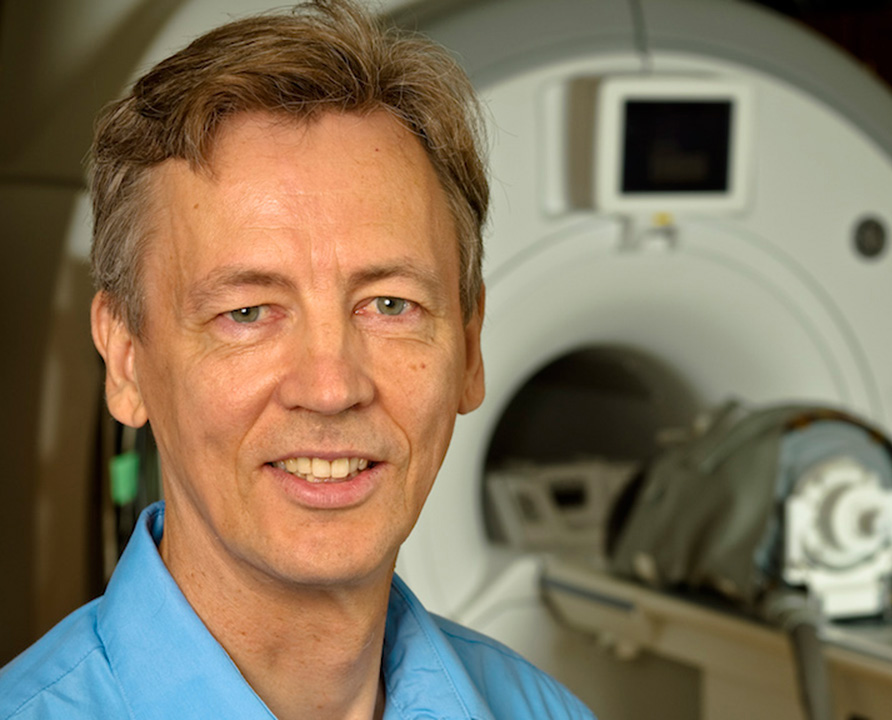Making waves
By Alisa Kim
Dr. Kullervo Hynynen, director of Physical Sciences at Sunnybrook Research Institute (SRI), was chosen as the winner of the 2014 Rayleigh award by the Institute of Electrical and Electronics Engineers (or IEEE, pronounced “eye-triple-E”).
The Rayleigh award represents the IEEE’s highest honour for achievement within the field of ultrasonics and is presented annually by the Ultrasonics, Ferroelectrics and Frequency Control Society.
Hynynen, who is also a professor at the University of Toronto, was presented with the award at the IEEE’s International Ultrasonics Symposium, which was held Sept. 3–6, 2014, in Chicago, Illinois.
He was chosen from among 11 other nominees for his work on image-guided therapeutic ultrasound, in particular, for pioneering the use of focused ultrasound to ablate brain tissue noninvasively and to open, reversibly, the blood-brain barrier.
Dr. Stuart Foster, a senior scientist at SRI and the 2010 winner of the Rayleigh award, says the honour recognizes a body of work and is given to someone who has made “extensive and original contributions to the field over a long period of time.” Sunnybrook Research Institute is the only research centre in the world to have two winners of this important award.
Foster notes the award is named after Lord Rayleigh (John William Strutt), a British physicist who discovered the inert gas argon, for which he was awarded the Nobel Prize in 1904. Lord Rayleigh was also the first to describe the scattering of sunlight, which causes diffuse sky radiation and is the reason for the blue colour of the daytime sky.
Hynynen was picked for the honour because of his considerable achievements in therapeutic ultrasound, says Foster. “He’s widely known as the father of this field,” he says.
Reflecting on Hynynen’s accomplishments, it’s not hard to see why he is regarded as a trailblazer in focused ultrasound in medicine.
In partnership with industry, Hynynen, who holds the Canada Research Chair in Imaging Systems and Image-Guided Therapy, invented and commercialized technology that pairs focused ultrasound with magnetic resonance imaging (MRI) to treat disease precisely and noninvasively.
This technology is redefining surgery as scalpel-less. High-intensity focused ultrasound, or HIFU, guided by MRI can heat and destroy targeted tissue without harming surrounding healthy tissue—all without breaking skin.
Hynynen and neurosurgeons at Sunnybrook conducted the first Canadian clinical trial evaluating MRI-guided HIFU to treat essential tremor. The results were impressive; patients unable to drink from a cup or sign their name legibly were able to do so after treatment.
Even more compelling is focused ultrasound’s nonthermal capability: opening the blood-brain barrier for targeted delivery of therapy. Hynynen published the first experiment using MRI-guided focused ultrasound to deliver immunotherapy to preclinical models with Alzheimer’s disease.
The remarkable results showed antibodies cleared amyloid-beta, a protein found in plaques that are a hallmark of the disease, significantly faster than injecting antibodies in the bloodstream.
He has also shown that it can be used to deliver gene therapy to specific brain regions, including the hippocampus, which is important for memory and learning.
These results are preclinical, but clinical translation is on the horizon. Hynynen is among the lead scientists of the Slaight Centre for Image-Guided Brain Therapy and Repair at SRI. The centre will be the site of the world’s first clinical trials testing the use of focused ultrasound to deliver therapy through the blood-brain barrier to treat brain disorders including dementia and stroke. Read Breaching Barriers to learn more about Hynynen’s research on focused ultrasound.
It is in light of these significant advances that the Rayleigh award committee chose Hynynen for the accolade, says Foster. “The award is [given] to individuals who have really changed the landscape of ultrasonics, where you can point to things where they’ve had a significant effect and changed the way people do things.”



